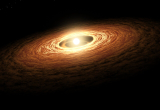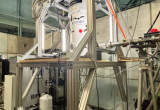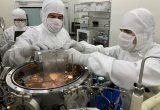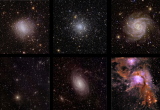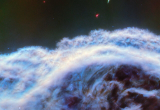An international research team involving scientists from IAS and other laboratories has just revealed the chemical composition of a disk of matter rotating around a young star, where new planets are forming. The results reveal the largest number of carbon-containing molecules observed to date in such a disk, and have implications for the potential composition of planets that could form around this star. These results, published in the journal Science, were obtained as part of the MIRI instrument's guaranteed time program, developed by a consortium of laboratories in Europe and the USA and involving the IAS.
Latest News
1 year 5 months ago
1 year 5 months ago
As part of its programme, carried out over several years, to study the effects of cosmic rays effects on highly sensitivity cryogenic detectors, the IAS has developed the DRACuLA (Detector irRAdiation Cryogenic faciLity for Astrophysics) system for measuring the response of this type of detector to the impact of particles such as protons or alpha particles.
1 year 6 months ago
Since December 2020, the near-infrared hyperspectral microscope MicrOmega, developed by IAS, took part in the analyzes of the samples returned from the carbonaceous asteroid Ryugu by the JAXA Hayabusa2 mission. Thanks to test campaigns, with IAS participation, this high-performance instrument is now ready to analyze samples from the Bennu asteroid, brought back by OSIRIS-REx.
1 year 6 months ago
The first scientific results from Euclid, the European space cosmology mission, were unveiled on Thursday May 23, 2024: 15 scientific papers, including 5 general ones about the space mission, its instruments and processing, and 10 on the first astrophysical observations. These first observations and articles confirm Euclid's performances, and mark the start of the “Euclid era” for cosmology. The nominal mission will last 6 years, with partial data delivery within 1 year, and the first data delivery within 2 years.
1 year 7 months ago
The Horsehead Nebula has been discovered in the visible range as a dark cloud appearing in extinction at the edge of a giant molecular complex in Orion. It is a photo-dominated region (PDR) illuminated by a massive star. It is of great interest to astrophysicists, as it is the ideal object for understanding the interactions between UV radiation emitted by stars and interstellar matter, the way radiation propagates inside dense clouds, and the impact of radiation on matter (photo-evaporation, ionization, dissociation, fragmentation, heating, etc.).







